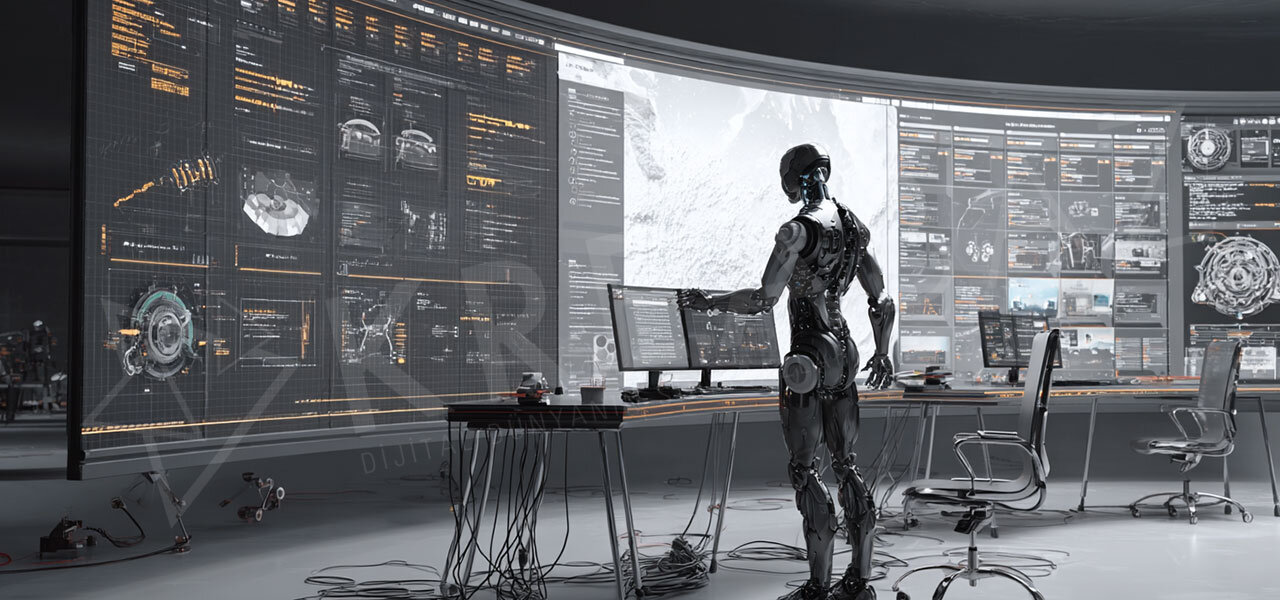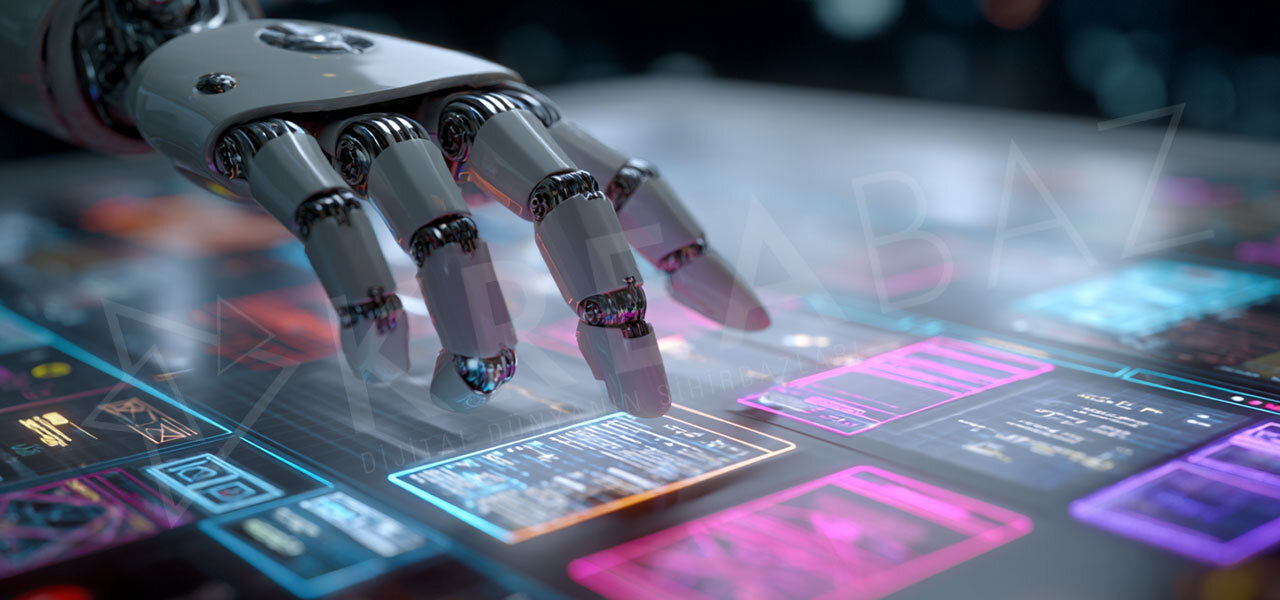
Web design is a critical element for every company that wants to exist in the digital world. The questions asked in this field usually focus on service content, technical details and software support. Factors such as user experience, mobile compatibility, SEO-friendly infrastructure and fast loading determine the quality of web design. Companies want to get detailed information on these issues while looking for solutions that meet their business goals. Designs that are compatible with current technologies, offer ease of use and remain loyal to brand identity stand out. This series of articles aims to eliminate the confusion of information in this field by providing clear and simple answers to the most frequently asked questions about web design. Welcome to our Frequently Asked Questions About Web Design article, which includes many questions such as which tool you should use, how the design process works, what are the important technical details.
What are Web Design Services?
Web design services include designing a website and making it ready for publication. These services include interface design, software infrastructure, mobile compatibility, speed optimization and SEO-friendly structures. In addition, issues such as hosting, domain registration, content management and technical support are also within this scope. Effective and conversion-oriented designs that are in line with current trends should be preferred. During the design process, the dynamics, sector and requests of the company whose website is made should be considered together with both aesthetics and functionality.

Web Design
Web design is to design and prepare a site for publication in a digital environment. This job requires software and graphic knowledge. Web designers deal with both visual and technical details. They determine page structures, color harmony and content placement. Ensuring mobile compatibility is also part of web design work. User-friendly interfaces are developed. SEO compatible designs are preferred. Web design is the digital face of companies. Therefore, web design is a strategic task.
Web design services for companies are aimed at strengthening the company’s digital presence. Designs suitable for corporate identity positively affect brand perception. Mobile compatible structures provide correct viewing on all devices. SEO supported pages provide an advantage in Google rankings. In addition, customer interaction increases with call buttons and contact forms. Company-specific panel structures facilitate content management. Solutions for customer expectations strengthen the bond between companies and customers
Web design is the digital face of a brand. A professional website directly affects the customer’s first impression. User-friendly interfaces improve the visitor experience. Fast and mobile-friendly pages extend the time they stay on the site. It also positively affects sales by creating a sense of reliability. Design quality allows you to stand out from the competition. Moreover, it provides the opportunity to explain your brand and goals in the most accurate way. Therefore, web design should not be ignored.
Of course, not every company has to have a website. However, today it has become a necessity for every company to have a website. Consumer habits have mostly shifted to digital. Customers look at the website and digital reflections before researching a brand. Undoubtedly, companies without a website have serious trust problems. Also digital ads and SEO for their work, they need to have a website. Digital presence is becoming even more important due to increased competition both in digital and in real life.

How to Make Web Design?
Web design is planned and planned within a certain process. First of all, needs are analyzed. A site map is created in the light of the company’s wishes, needs, expectations, dynamics of the sector and innovative ideas. Then design work is done and interfaces are coded. Mobile compatibility and speed optimization are integrated. Then the content is placed and the testing process begins. Each stage should proceed carefully. Finally, the site is launched and monitored. Of course, each of these processes contains many dynamics in itself.
The basic elements of web design are visual balance, color harmony, typography and content layout. User experience-oriented menus make navigation easier. Mobile compatibility ensures that the site works correctly on all devices. Fast loading times increase user satisfaction. SEO compatible structures are important in search engine ranking. All these elements should be balanced with each other.
There are different programs that can be used for web design. Adobe XD, Figma and Sketch are used for interface design. Visual Studio Code and Sublime Text are preferred for coding. Content management systems such as WordPress are also frequently used. Each program offers different functions and advantages. The important thing here is to choose the most suitable one according to the purpose of use, to avoid unnecessary workloads and the costs it brings.
The most popular tools for digital design are Adobe Photoshop, Illustrator and Canva. With these programs, graphic designs, logo works and social media content are ready. These tools are useful for preparing visual materials before web design. These programs are especially preferred for vector drawings and mockup presentations. Easy-to-use online alternatives are also available.
The best program for website building depends on the specific project. WordPress is ideal for those with no coding knowledge. Visual Studio Code is advantageous for those who know HTML, CSS and JavaScript. For e-commerce, Shopify or WooCommerce solutions stand out. Agencies usually design with Figma or Adobe XD. The choice should be made according to business goals, cost and needs.
Whether it is corporate sites, blog pages, e-commerce platforms, the website is your digital identity. With web design, you create effective digital spaces for your brand. In these areas, you can present everything about your needs to your visitors. At the same time, brand identity is transferred to digital and strengthened. It offers an effective channel for sales, promotion and communication. Web design is your first connection point with the digital world.

What is UX - UI?
UX – UI are two fundamental design concepts that make up the web experience. UX, User Experience, ensures the ease of use of a site. UI is the User Interface and deals with visual element design. Together, UX and UI create an effective and eye-pleasing experience. It keeps the user on the site and keeps them coming back. Therefore, UX – UI should be planned properly. A correct UX – UI design strengthens the brand image. This area offers a balance of both aesthetics and functionality. With the advancement in technology, UX – UI has become more important.
Web design and programming ensure the technical and visual integrity of digital platforms. Web design manages the visuals and programming manages the infrastructure. Pages are coded with HTML, CSS and JavaScript. Backend systems work integrated with databases. Web design and programming should be planned together. The visual interface depends on the technical structure. User experience covers both. Professional sites rise with the harmony of these two areas. Code and design should be synchronized. Therefore, teamwork is important.
It would not be right to highlight a program as the best web design program. Web design programs differ according to need. Figma, Adobe XD, Sketch are frequently preferred. Visual Studio Code stands out for coding. WordPress is suitable for those who do not know code. Bootstrap and Webflow also make web design easier. Each tool has different advantages. The choice depends on the project and the skill of the designer. The best web design programs save time. They speed up the design process. They make interfaces attractive.
WordPress website stands out with its ease of use. Its code-free structure is suitable for all levels. It has thousands of themes and plugins. It has a compatible infrastructure for SEO. A blog, corporate or e-commerce site can be set up with WordPress. Updates can be done easily. It can be published with hosting and domain. The administration panel is user-friendly. WordPress website provides high performance at low cost.
The question of how much a WordPress site is depends on the preferred features. Theme and plugin prices differ. Special designs increase the cost. Hosting, domain and SSL costs. E-commerce sites can be higher. For a clear answer to the question of how much is a WordPress site, it will be determined according to the project details.

How Much is a Website?
“How much is the website?” The question is perhaps one of the most common questions we receive. And of course it is important for everyone who wants to have a website. The scope of design determines the answer to this question. A simple promotional site is more affordable. E-commerce or corporate solutions increase the cost. Expenses such as domain, hosting and security should also be taken into account. Software language and site infrastructure also affect the price. The question of how much a website costs cannot be answered clearly. Because the scope of each project is different. Design demands and content structure vary. In addition, the management panel and special functions increase the price. Considering that many of these services are based on Dollars and Euros, website prices vary greatly. As the scope expands, the budget increases. In addition, maintenance and support services may create additional costs. It is best to get an offer according to the project.
The question of how much a WordPress site is depends on the preferred features. Theme and plugin prices differ. Special designs increase the cost. Hosting, domain and SSL costs. E-commerce sites can be higher. For a clear answer to the question of how much is a WordPress site, it will be determined according to the project details.
The question of how many TL domain is the first question of those who are thinking of setting up a site. Domain prices vary by extension. “.com” extension is usually the most expensive. It starts around 2 dollars on average. There are also alternatives such as “.net”, “.org” but they are not as valuable as com. Local extensions (e.g. “.com.tr”) require additional documentation. Prices are set on an annual basis. Registration renewal also costs money. Some special names may be more expensive. Domain companies should be examined for a clear answer to the question of how many TL domain. In addition, campaign periods may affect the price. Prices are paid annually. Brand compatibility should be considered in domain selection.
The question “Does making a website make money?” is actually a question that needs to be expanded for whatever purpose. But basically “yes”, with the right planning, profit is possible. Websites are used for blog, e-commerce or service promotion. Advertising revenues can also be provided. In addition, if there is a sale of products or services, this generates direct income. However, patience and strategy are required. Quality content, SEO and promotion are important. The website earns money, but it happens over time. Regular content is essential for successful examples. Making a website can also generate passive income. This is especially possible in digital product sales. Professional infrastructure is important for profit.
There is no clear answer to the question of how much a website earns. Earnings depend on the type and purpose of the site. E-commerce site generates direct income through sales. Blogs can earn with advertising and sponsorship. Service sites provide customer acquisition. However, investment is required for profit. Design, content and advertising spend are important. SEO and ads can increase earnings. Also, user experience affects earnings. The question of how much the website earns varies according to the target. Some sites can earn thousands of TL per month. However, some may not generate any income at all. Therefore, strategy is essential.

E-Commerce Website
E-commerce websites are marketplaces that offer products and services online. It facilitates product and service sales. These sites include secure payment systems. E-commerce sites appeal to a much wider audience. If they are mobile compatible, it increases the user experience. Visibility increases thanks to SEO compatible infrastructure. Category structure, product filtering and campaign systems are important. Inventory and order management are also included. Businesses grow digitally with an e-commerce site. Data analysis can also be done. Thus, marketing strategies can be developed. E-commerce site provides competitive advantage. Customer satisfaction and speed are the main elements here. Success is achieved with the right infrastructure.
The cost of e-commerce sites depends on the site features. Advanced features increase the cost. Payment systems, campaign management and integrations are included in the price and increase the price. Theme design and software also create costs. Domain and hosting expenses are also added. SEO work also affects the budget. Detailed analysis should be done for the question of how much the e-commerce site costs. Costs should be determined according to needs. Investment may be required for long-term gain.
The question of whether it is necessary to be a company to open a website is one of the most common questions. The answer to this question is quickly “No”. The site can also be opened individually. However, if e-commerce is to be done, tax registration is required. It is a legal obligation to establish a company for commercial activity. It is not necessary to be a company to open a website. However, it is required for official sales. Content or blog sites can be made without establishing a company. It may be necessary to open a sole proprietorship for advertising revenues such as Adsense. If product sales are to be made, it is necessary to issue invoices. In this case, it is necessary to establish a company. However, individual opening is sufficient for informational sites.
The question of how many days the website is made varies according to the project. Simple promotional sites can take 7-15 days. Corporate or e-commerce sites take longer. It can take an average of 10-30 days. The number of pages, content and design process affects the time. Details should be known for the question of how many days the website is made. Ready templates shorten the time. Special software extends the time. If the content is ready, the process accelerates. Revisions and tests should also be included in the time. The follow-up of the project manager accelerates the process. Team experience also affects the process.

What Does a Web Designer Do?
Web designer produces visual and functional projects in the digital world. Creates the interface of the sites. It develops structures that users can navigate comfortably. Design represents the digital face of the brand. Therefore, aesthetics and user experience are important. Web design determines the digital identity of the brand. It also provides mobile compatibility. It prepares SEO compatible pages. Details such as color, font and content layout are determined. Web design is the first factor that affects the user. Therefore, functionality and simplicity are targeted. Web design progresses with technical infrastructure. Coding knowledge supports design.
The web designer should know both technical and visual issues. HTML and CSS knowledge is required. Java Script knowledge is an advantage. Must use tools such as Photoshop and Figma. He should be conscious about color harmony and typography. It should also recognize SEO rules. Think user experience-oriented. Understand the importance of mobile compatibility. Web designer should be solution-oriented. They should know project management and time planning. They should have knowledge about content layout and readability. Should follow design trends. Understand the target audience. Develop interactive designs. And most importantly, they should anticipate the user experiences of customers and advance their work in this direction.
The fundamentals of web design are to prioritize the user experience. It should not be forgotten that the basics of web design are simplicity and clarity. It is to offer a clean and easy structure. Colors should be harmonious and readable. Font selection is important. Responsive design is a necessity that can no longer be ignored. Site flow should be easy. Visuals should be optimized in the most accurate way. Page loading time should be short. This is one of the most important things that users care about. Designs that guide the user should be preferred. In addition, content hierarchy should be provided. Title and description structures should be organized for SEO. Secure links should be used. Accessibility should be considered. Button placement should be planned correctly.
Creativity is the first characteristic of a good designer. After that, he must also have the empathy to anticipate the user experience and needs. Because at the end of the job, he should know that many different people will use it. Time management must be strong. Communication must be strong. They should be prone to teamwork. Must be interested in technology. Must give importance to details. Must follow current trends. They should also be patient and determined. Must have problem solving skills. It is an advantage to have code knowledge. A good designer designs with the user in mind. He always considers visual harmony. He works in a planned and organized manner. They should produce original ideas in every project. A good designer never neglects functionality.
The question of where to start web design is often asked. First of all, basic concepts should be learned. HTML and CSS knowledge should be acquired. Then design tools should be recognized. Figma or Adobe XD can be used. Color harmony and typography knowledge should be learned. Practice with simple designs. The goal should be determined before starting web design. Ready-made themes can be examined. Online courses can be useful. Web sites should be analyzed. User experience should be examined. Coding knowledge can be improved over time. It is important to establish a solid web design foundation.
Web developer should know frontend and backend languages. HTML, CSS and JavaScript are basic skills. Should be able to use frameworks such as React or Vue. PHP, Python or Node.js should be known for the backend. Database management is also important. MySQL or MongoDB can be used. The web developer should know how to use APIs. They should also be familiar with security issues. The web developer should optimize the code. It should increase site speed. Develop in accordance with SEO rules. Recognize project management tools. They should know Git and GitHub. And of course, most importantly, a web developer should have the ability to solve problems.
The question of whether web design is difficult varies according to the person. Basic knowledge is easy to learn. However, advanced knowledge requires time. Design and code should be learned together. Patience and repetition are very important. Web design is a constantly evolving field. Therefore, learning never ends. Web design is not difficult but requires discipline. It is necessary to progress by practicing. Having a good command of design tools makes things easier. Although it may seem complicated at the beginning, it becomes clear over time. The degree of difficulty in web design depends on personal skills, effort and dedication. This field is a learnable discipline for anyone interested.
The question of how long it takes to learn web design depends on personal factors. Basic level knowledge can be learned in a few weeks. 2-3 months may be enough for intermediate level. Advanced knowledge requires more time. Even working 1-2 hours a day provides improvement. Training programs accelerate the process. Practice time affects learning. The time to learn web design varies from person to person. Online resources make learning easier. Working on ready-made themes is beneficial. Simple projects can be done in a short time. However, professionalism is gained over time. Continuity and perseverance are very important. Learning how to solve problems and developing new ideas is the most important part of developing in this business.
The question of how much a designer earns depends on work experience. Beginners earn lower salaries. Freelance jobs provide different earnings. Experienced designers can get high wages. Agencies pay a fixed salary. Freelancers earn project-based. Project type affects earnings. E-commerce site design can bring higher wages. Earnings also vary according to location. Those working abroad can earn in foreign currency. Designer earnings also depend on portfolio quality. Good references bring more work. There is no single answer to the question of how much a designer earns. Market conditions and personal success are effective.
Web designer makes visual arrangements for websites. Plans the page structure. Pay attention to color harmony. Determines the font selection. Designs buttons, menus and banners. Designs to improve user experience. It considers mobile compatibility. Web designer focuses on visuality. Code knowledge may be at a basic level. They usually work with frontend developers. The question of what a web designer does is very important. Because design is the first element that affects the visitor. Therefore, design quality is important. Web designer creates digital identity.
KREABAZ Web Design Agency
As KREABAZ Web Design Agency, we offer creative solutions. We develop user-oriented designs in all our works. We strengthen the digital identity of brands and maximize their presence in the digital world. By producing mobile compatible and SEO friendly sites, we make brands fully equipped in the digital world. We offer customized solutions for every sector with our KREABAZ brand. Aesthetics and functionality are together where we are. We always protect visual originality and combine it with creativity. KREABAZ carries you and your brand to digital in the strongest way.








